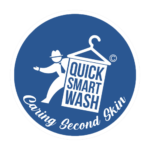
Efficient linen management is crucial for maintaining cleanliness, infection control, and patient comfort in healthcare settings. However, the traditional methods of linen management can be time-consuming, resource-intensive, and prone to inefficiencies. To overcome these challenges, healthcare facilities are adopting innovative strategies to streamline linen management processes. In this blog post, we will explore some of these cutting-edge strategies that are revolutionizing the way healthcare settings handle their linens, ultimately improving patient care and operational efficiency.
-
Implementing RFID Technology:
Radio Frequency Identification (RFID) technology is transforming the landscape of linen management in healthcare. By using RFID tags embedded in each linen item, healthcare facilities can track and monitor the movement of linens throughout the entire supply chain. RFID-enabled linen management systems provide real-time visibility, allowing staff to locate specific items quickly, optimize inventory levels, and prevent loss or theft. Moreover, automated RFID systems can streamline the inventory replenishment process by triggering automatic orders when stock levels reach a predetermined threshold. This ensures an uninterrupted supply of clean linens, eliminating the need for manual inventory checks and reducing the risk of linen shortages.
- Centralized Distribution Centers:
The implementation of centralized distribution centers is another innovative approach to streamline linen management. Rather than storing linens in multiple locations throughout the facility, healthcare settings can consolidate their linen inventory in a central distribution center. This centralization simplifies the process of inventory management, restocking, and retrieval of clean linens. The distribution center can be equipped with advanced sorting and distribution systems, such as conveyor belts or robotic systems, which automate the movement and sorting of linens. This significantly reduces the time and effort required for linen distribution, enhances accuracy, and minimizes the risk of mix-ups or misplacements.
-
Outsourcing Linen Services:
Outsourcing linen services to specialized providers is gaining popularity among healthcare facilities. By partnering with professional linen service providers, healthcare settings can offload the entire process of linen management, from laundering and sterilization to inventory management and replenishment. These providers have the expertise, resources, and infrastructure to efficiently handle large volumes of linens, ensuring quick turnaround times and adherence to stringent hygiene standards. Outsourcing not only reduces the burden on in-house staff but also allows healthcare facilities to benefit from cost savings, as they no longer need to invest in expensive laundry equipment, maintenance, and labor costs.
-
Predictive Analytics for Demand Forecasting:
Predictive analytics is playing a significant role in optimizing linen management. By analyzing historical data, including patient admission rates, seasonal trends, and specific department needs, healthcare facilities can use predictive models to forecast linen demand accurately. This enables proactive planning and prevents overstocking or shortages. With accurate demand forecasting, healthcare settings can optimize linen inventory levels, reduce storage requirements, and avoid unnecessary expenses. Predictive analytics can also help identify patterns and anomalies in linen usage, allowing for targeted interventions to reduce waste and enhance operational efficiency.
-
Eco-Friendly Initiatives:
Innovative linen management strategies in healthcare are increasingly incorporating eco-friendly initiatives. Healthcare facilities are adopting environmentally sustainable practices such as using biodegradable detergents, implementing energy-efficient laundry equipment, and exploring reusable linen options where appropriate. These initiatives not only reduce the environmental impact but also contribute to cost savings over time. By embracing eco-friendly linen management, healthcare settings align with global sustainability goals while ensuring the highest standards of patient care.
Conclusion:
Innovative strategies for streamlining linen management in healthcare settings are revolutionizing the way linens are handled, stored, and replenished. By leveraging RFID technology, implementing centralized distribution centers, outsourcing linen services, utilizing predictive analytics, and embracing eco-friendly initiatives, healthcare facilities can optimize operational efficiency, enhance patient care, and reduce costs. These cutting-edge approaches are paving the way for a more streamlined and sustainable future in linen management within the healthcare industry. By adopting these innovative strategies, healthcare facilities can focus on what matters most—providing exceptional patient care while ensuring a clean, comfortable, and efficient environment for both patients and staff.

